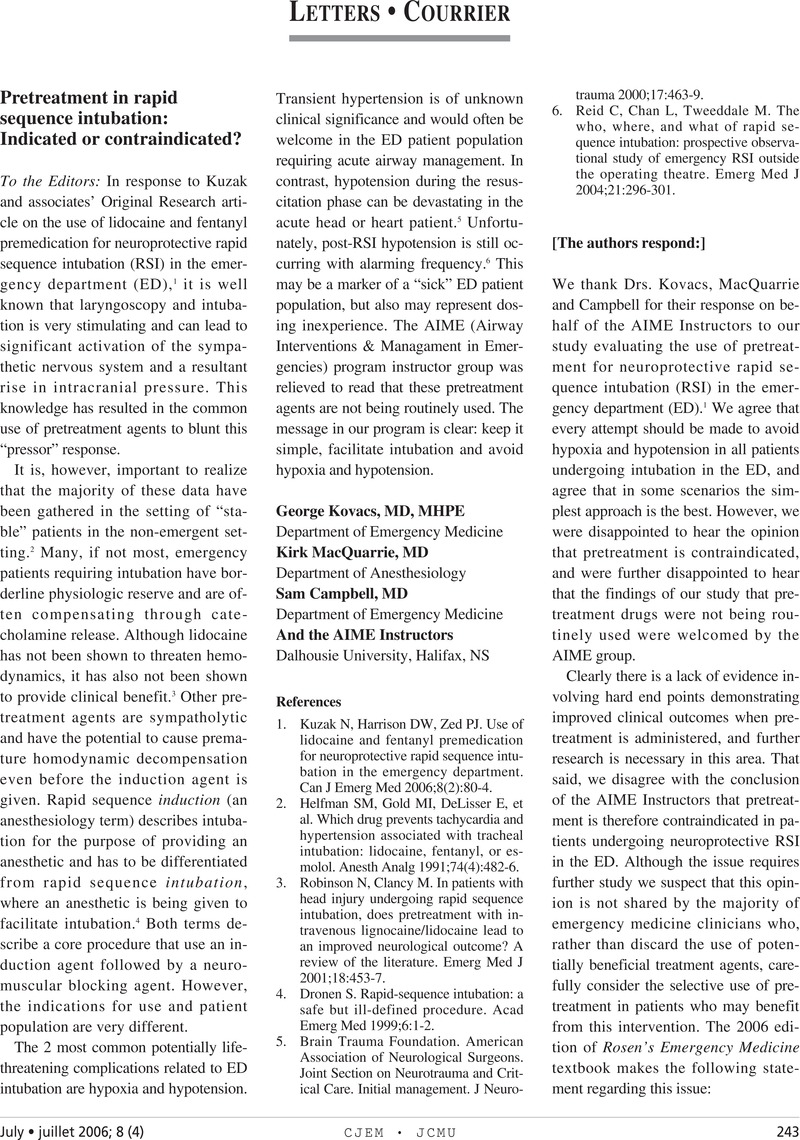Crossref Citations
This article has been cited by the following publications. This list is generated based on data provided by Crossref.
Mace, Sharon Elizabeth
2008.
Challenges and Advances in Intubation: Rapid Sequence Intubation.
Emergency Medicine Clinics of North America,
Vol. 26,
Issue. 4,
p.
1043.



